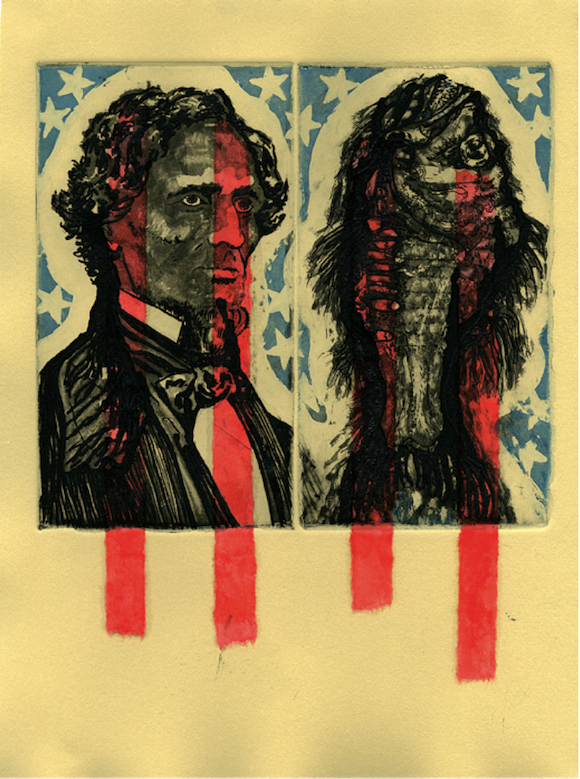Beginning June 3, the Georgia Museum of Art at the
University of Georgia will present the exhibition
“The Genius of Martin Johnson Heade,” organized by the
Museum of Fine Arts, Boston. Although the exhibition
includes landscapes, seascapes and Heade’s trademark paintings of tropical
birds and flowers, it does not include any of his Cherokee Rose images. The
Cherokee Rose (Rosa laevigata) is the state flower of Georgia.
To remedy this situation, Mrs. Deen Day Sanders, a noted art
collector, gardener, philanthropist and Georgian, has agreed to lend Heade’s
painting of two Cherokee Roses to the museum, along with four other works by
Heade. Mrs. Sanders’ paintings will make up a small supplementary exhibition,
on view the same dates as “The Genius of Martin Johnson Heade.”
 |
| Martin Johnson Heade, Cherokee Roses, n.d. |
Nearly forgotten for the first part of the 20th century,
Heade’s paintings were rediscovered around World War II and Heade is now
recognized as one of the most important American painters of the 19th century.
His works are in the collections of many major museums, including the Museum of
Fine Arts, Boston, which has the largest public collection of Heade’s
paintings.
 |
Botanical illustration of the
Cherokee Rose engraved by
Pierre Joseph Redouté (1759–1840).
Image: New York Public
Library Digital Collections |
Heade devoted equal time to landscape, marine and still-life
subjects, but is best known for his studies of tropical birds and flowers. He
began painting still lifes of flowers native to the southeastern United States
when he moved to Florida, in 1884. Heade’s paintings of magnolias (two of which
are included in the MFA Boston’s exhibition) date from the same era.
T.E. Stebbins, author of the catalogue raisonné on Heade,
writes, “These paintings of Cherokee Roses . . . have a lushness and an
aggressive confidence that far surpass [Heade’s] accomplishment in landscape
during the same years and are more successful than those of northern roses in
the same setting.”
Mrs. Sanders will also lend Heade’s paintings “Apple
Blossoms,” “The Meadow,” “Still Life with Glass of Roses” and “A Red Rose” from
her collection.
Sarah Kate Gillespie, the museum’s curator of American art, said, “The loan of these important works from Mrs. Sanders beautifully augments the pieces in the MFA Boston’s exhibition, as they feature Heade’s other well-known floral subjects: the rose and the apple blossom. The rose in particular was a significant subject for Heade, as he painted both the red rose and the Cherokee Rose more than any other American artist in the 19th century, and we are thrilled to be able to share these works, as well as the meticulously rendered landscape, with our visitors.”
Hillary Brown
Director of Communications







